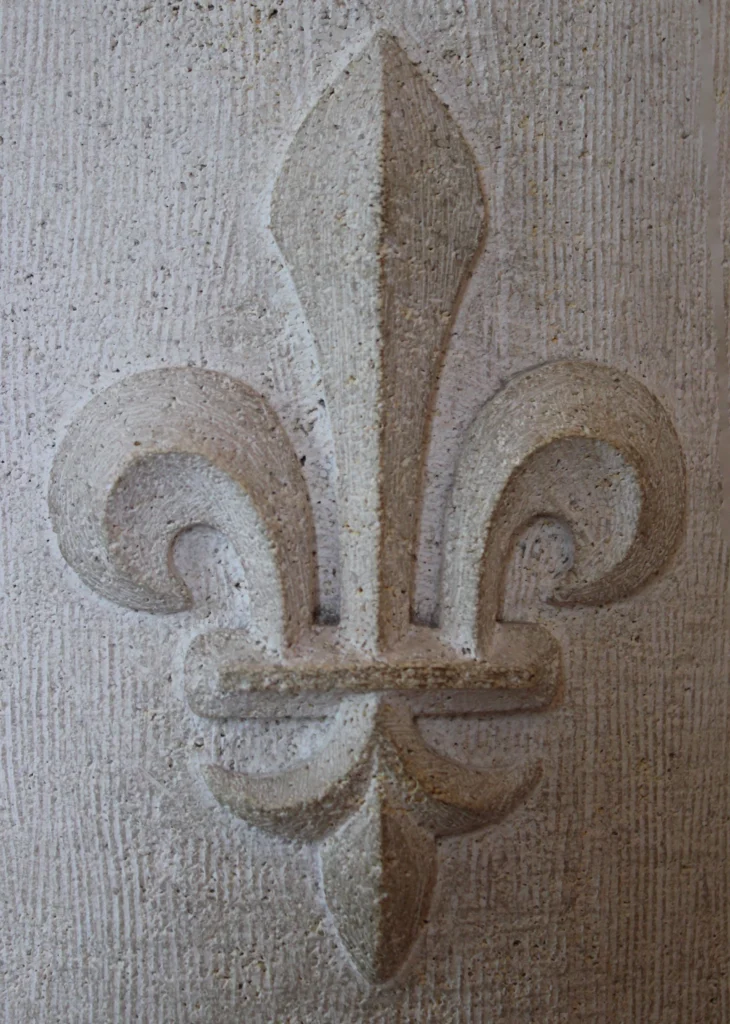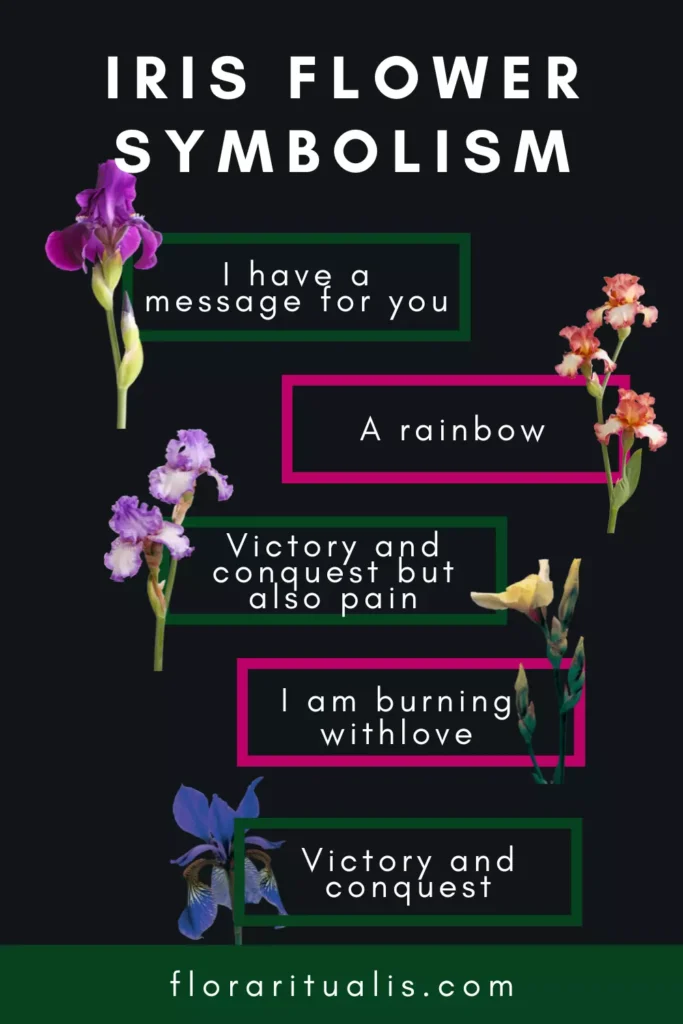The Iris flower meaning is intimately linked with Greek mythology, however, there are also other various cultures associated with this flower.
The word “Iris” originated from the Greeks and it signifies “rainbow.” This was to portray the variety of colours in which the Iris flower comes in.
Iris also means “eye of heaven” and it relates to the coloured part of the eye.
A variety of the iris flower is native to the Mediterranean region and southern part of Europe. However, it also features in several ancient cultures such as Japan, China and Assyria.
In this blog we’re going to explore why the iris flower is a perfect flower as a Virgo birth flower.
We will get into the various myths that surround this flower, the beliefs and symbolism linked to this flower and finally the uses of the iris flower.
What does the iris flower symbolise?
Iris are also known as flag and throughout the years they have come to signify various emotions. Some of them include eloquence, hope and friendship. Astrologers and Alchemists place the flower under the dominion of the planet Mercury. It will make a great gift as Virgo birth flower.
The deep purple ones are also a symbol of royalty.
The Iris with three petals symbolize faith, wisdom and valor. But they also signify the Holy Trinity in Catholicism.
The Purple Iris is significant of wisdom and compliments.
The Blue Iris signifies royalty, faith and hope.
The Yellow Iris symbolises passion.
The White Iris signifies purity.
Tze-Hu-Tieh is the name for the Iris in China. It translates to the “the purple butterfly.”
The City of Florence in Italy is presumed to have obtained its named from the type of Iris called Iris Florentina. In the ancient city of Florence a white Iris was displayed on a red shield.
In Ancient Babylon and Assyria the iris flower was carved as the terminating ornament on the ancient kings scepter.
Gemini and Virgo birth flower
Mercury is the planet that rules over two zodiacs that is Gemini and Virgo.
Mercury’s qualities can be related to the god Hermes and one of his main function was delivering messages.
Moreover, the qualities of mercury in astrology have come to revolve around communication, intellect and transportation.
The Iris flower falls under the dominion of the planet mercury, although it can be a perfect birth flower for both Gemini and Virgo, the myths surrounding it tends more towards Virgo due to its association with women.
Iris flower meaning in various myths and cultures
The Iris flower meaning differs from various myths across the world, let’s explore some of those myths and understand the various meaning linked to this flower.
Iris the Greek rainbow goddess
The Iris flower meaning can be understood through the myth of the Greek goddess Iris.
Iris was the Greek goddess of the rainbow, she was also one of the presiding goddesses over the sea and sky.
She was considered as the female aspect of Hermes who is the Greek god that represents the planet Mercury.
Her personal emblem was the rainbow of many colours which was also how she traveled from the heavens to earth in order to deliver her divine messages.
She was specially known as the messenger of the god Zeus/Jupiter and the goddess Hera/Juno.
One way to summon the goddess Iris was to place a purple iris on the graves of women in ancient Greece. This was the belief that Iris would escort the dead women into the Elysian Fields.
A tradition that is still used today when young girls die an iris is placed on their graves.

Egyptian Mythology
The ancient Egyptians revered the Iris for it exotic beauty. When the 15th Century BCE pharaoh Thutmose III of Egypt conquered Syria, where irises grew profusely, he vowed to bring back the iris to Egypt.
The Iris flower meaning in ancient Egyptian societies was linked to the symbol of power and it was placed on the brow of the sphinx at the Temple of Amon in Karnak.
They would also place the iris flower on the scepters of their monarchs. The three leaves of the iris engraved on the scepters represented faith, wisdom and valour.
The world’s oldest known recipe of toothpaste comes from the ancient Egyptians. It consisted of dried Iris flower, salt, pepper and mint.
Japanese Culture
In Japan the fifth of May is known as Boy’s day. The Iris flower is symbolic of this day because of its seasonality but also due to its belief that it could exorcise impurity and evil.
Moreover, Shobu (Japanese word for Iris) means martial spirit which corresponds to the idea of boys being strong and successful.
Since the Iris leaves are sword-shaped, the flowers also reflect the samurai culture in Japan.
Today in Japan Boy’s day is becoming less significant, formal and traditional. It is gradually being called Children’s day to encompass both boys and girls.
Iris Flower meaning in history
While the iris flower meaning begins in mythology it evolves with time in history. Let’s explore the meanings and beliefs surrounding the Iris flower in our current history.
History of Fleur-de-Lys in France
During the Middle Ages in France, the Iris flower was linked to the French Monarchy.
The Iris flower became synonymous with the ruling class and it became the national symbol of France.
King Clovis I adopted the flower as his emblem this tradition was followed by other monarchs which included King Louis VII and King Charles V.
King Louis VII adopted the purple iris while King Charles V added the three leafs iris to his coat of arms in 1376.
Clovis was the 5th century King of the Franks and he won a significant battle thanks to the iris flower.
He was trapped between a deep river and enemy soldiers. Then he saw the a bunch of yellow iris flowers near the water and he knew instinctively that it was safe to cross.
During the 12th century this emblem was revived by King Louis VII of France, he adopted the purple iris as his symbol during his crusades.
The Iris was initially known as “Fleur de Louis” then later it became “Fleur-de-Lys”.
In 1339 when King Edward III claimed the french throne it was adopted as a symbol of the English arms.

Legend of Clotilda Wife of King Clovis
As an alternative legend to King Clovis and Fleur-de-Lys this legend talks about the involvement of the Wife of King Clovis.
The wife of the King Clovis long prayed for his conversion. When he was about to be defeated by the Huns, his wife recommended him to God.
The odds of the battle turned in his favour and he was victorious. He was then baptised by St Remi on this occasion.
The Iris substituted the original three frogs found on the shield of King Clovis due to Clotilda’s vision.
Victorian and Medieval times
The iris flower was very popular on motifs during the Victorian time. It appeared in various places such as stained glasses and fireplace tiles.
It was also used as a winter decoration for churches. This also included its orange seeds. The iris was used for any sort of event such as a birth or an invitation.
During the Medieval period, the iconography was associated with the Annunciation. It is when the angel Gabriel announced to the Virgin Mary that she will bear a child.
In Hans Memling’s painting he portrays the Annunciation as the angel appearing to Mary. And in the interior was a vase of flowers filled with white lilies and a single blue iris.
Native Americans Iris meaning and uses
While Irises were grown because of their exotic beauty, it was also an amazing source of medicinal value. The Native Americans used the iris flower in various ways.
The Cherokee used the roots of the iris flower they found in Virginia. They would pound the roots and make paste that they used as ointment on their skin.
They also made an infusion out of the roots which they used to treat liver disorders.
The Seminole a group of Native American people who developed around the 18th century in Florida would use the iris to prevent shock from alligator bites.
In order to cure dropsy (a swelling caused by the retention of fluid), the juice from the German Iris was mixed with wine as a cure.
Other Native American groups made a root tea that was used for gastric problems, stomachaches, kidney and bladder disorders, and gonorrhea.
Rocky Mountain Iris was used as a gauze in order to help with the treatment of various ailments:
- sores
- bruises
- aches and pains
- lesions
- toothaches
In the Shamanism tradition the root of Iris was added to tobacco and it was smoked in order to ease nausea.

Iris flower in modern times
In our current time, the fleur-de-lys is the symbol of the City New Orleans in Louisiana. Additionally, Saint National Football League Team which is the New Orleans team also uses the fleur-de-lys as an emblem.
The iris flower is also the state flower of the Tennessee state.
In order to commemorate the French monarchy Quebec’s flag also features the fleur-de-lys.
The name Iris was a quite popular girl’s name in the United States during the 1920s and 1930s.
Goo Goo Dolls performed a song called Iris which was very famous and featured in the movie City of Angels (1998).
Vincent Van Gogh painted Irises while he was hospitalised in an asylum in Saint-Remy in France. He was painting what he saw outside of his window.
The oil extracted from the petals of the Iris flower is used today in aromatherapy.
The aged roots and also the petals of the iris are used in the flavouring of some gins which includes Bombay Sapphire.
Enjoyed this blog post? Then make sure you read the other blogs of flowers and plants that fall under the gemini zodiac and virgo zodiac.
FAQs Iris Flower
References
Cumo, C. (Ed.). (2013). Encyclopedia of Cultivated Plants [3 volumes]: From Acacia to Zinnia. ABC-CLIO.
Dietz, S. T. (2022). The complete language of flowers the complete language of flowers: A definitive and illustrated history – pocket edition. Wellfleet Press.
Junius, M. M. (1986). Practical handbook of plant alchemy: How to prepare medicinal essences, tinctures and elixirs. Inner Traditions Bear and Company.
Thiselton Dyer, T. F. (1994). Folklore of Plants. Llanerch Press.
Watts, D., & Watts, D. C. (2007). Dictionary of Plant Lore. Academic Press.
Deena Bsingh, a UK-born, Mauritius-raised content writer, is a dedicated explorer of the ancient world’s hidden treasures. Armed with classical studies knowledge and a decade of spiritual immersion, Deena delves deep into the wellspring of ancient wisdom. Her illuminating writings on flower meanings and culinary history are imbued with the profound insights she has gathered on her journey. Through her Medium articles, she guides readers on transformative journeys that bridge the gap between ancient cultures and contemporary consciousness, offering a rich tapestry of understanding that endures through time.

